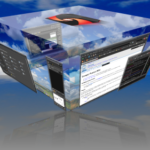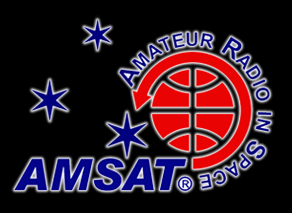Posts Tagged ‘Satellite’
 The 2 Meter Band: Much More Than FM
The 2 Meter Band: Much More Than FM
Way back in the Wayback machine, when I was working on getting my Technician license (in the 20th century), I recall looking at the frequency bands available to Techs. Technicians had operating privileges for everything above 50 MHz, which looked like a lot of useful spectrum to me. The idea at the time was that Technicians were exploring the new frontier of amazingly high frequencies. Since then, the Technician license has morphed to be the entry level license.
ICOM has a good graphic that shows all of the ham bands and shows the common subbands for various modes. I snipped out the portion that covers the most popular VHF/UHF bands (below). Wow, look at all the stuff you can do! Also, it is 4 MHz of spectrum, big enough to fit eleven 20 meter bands inside it. (Yeah, yeah, the propagation is a lot different.) Speaking of bandwidth, take a look at the 70 cm band, with 30 MHz of spectrum. (Not shown is the 23 cm band, which spans 60 MHz.) The higher you go in frequency, the more spectrum there is.
Speaking of bandwidth, take a look at the 70 cm band, with 30 MHz of spectrum. (Not shown is the 23 cm band, which spans 60 MHz.) The higher you go in frequency, the more spectrum there is.
Most people think of the 2-meter band as just FM and repeaters, but it is much more than that. I copied the 2-meter band graphic and added my own notatation on the various uses of the band.
 Much of the band is allocated to FM, which is consistent with the popularity of the mode. I didn’t mark all of the FM segments, so refer to the color coding to see them. But there is much more than FM simplex and repeaters. Down on the low end is the CW-only segment and EME activity (Earth-Moon-Earth or moonbounce). The “weak-signal” enthusiasts tend to use the SSB portion, with the SSB calling frequency of 144.200 MHz. You may often hear CW in the SSB subband and radio hams flip back and forth between the modes depending on propagation. Meteor scatter is mostly done via the WSJT-X mode of MSK144 around 144.140 MHz.
Much of the band is allocated to FM, which is consistent with the popularity of the mode. I didn’t mark all of the FM segments, so refer to the color coding to see them. But there is much more than FM simplex and repeaters. Down on the low end is the CW-only segment and EME activity (Earth-Moon-Earth or moonbounce). The “weak-signal” enthusiasts tend to use the SSB portion, with the SSB calling frequency of 144.200 MHz. You may often hear CW in the SSB subband and radio hams flip back and forth between the modes depending on propagation. Meteor scatter is mostly done via the WSJT-X mode of MSK144 around 144.140 MHz.
Automatic Packet Reported System (APRS) activity is mostly on 144.390 MHz, using FM-based 1200-baud packet radios. Other packet radio usage is not shown but is usually around 145.01 MHz. The 2m band is very attractive for satellite use, with VHF propagation properties and manageable doppler shift for Low Earth Orbit (LEO) satellites. The downlink from the International Space Station (ISS) is usually 145.80 MHz.
Over time, I’ve used all of these 2m modes mentioned above, with the exception of EME. I am still working on that one and I hope to have a new 2m Yagi installed sometime this year that will enable it.
73 Bob K0NR
The post The 2 Meter Band: Much More Than FM appeared first on The KØNR Radio Site.
 ZF2NR: Another Slacker DXpedition
ZF2NR: Another Slacker DXpedition
Operating from countries outside the US can be a lot of fun. I just completed another another Slacker DXpedition, this time to the Cayman Islands. The formula for this type of operation is simple: identify an interesting vacation spot that is also considered DX, travel there with friends & family, take along some compact radio gear and get on the air. A key point is to not overdo the radio operating or the friends & family will veto any radio activity on future trips.
 Licensing for the Cayman Islands is relatively easy if you hold a US FCC amateur radio license. Complete info can be found on the Ofreq web site. Licensing for the Caymans is typical of many Caribbean countries: fill out the application form, send it to Ofreq by email along with a copy of your US license, passport and $25US. Visitor call signs have the prefix ZF2 and you can request your favorite two-letter suffix. That’s how I got ZF2NR.
Licensing for the Cayman Islands is relatively easy if you hold a US FCC amateur radio license. Complete info can be found on the Ofreq web site. Licensing for the Caymans is typical of many Caribbean countries: fill out the application form, send it to Ofreq by email along with a copy of your US license, passport and $25US. Visitor call signs have the prefix ZF2 and you can request your favorite two-letter suffix. That’s how I got ZF2NR.
I was issued a Class A license which has all operating privileges. My spouse Joyce/K0JJW holds a US General Class license and was issued a Cayman Class B license, which has limited HF privileges (no phone on 40m, 20m, or 17m). So keep that in mind if you have a General Class license.
Grand Cayman is in grid EK-99 and is IOTA NA-016.
My equipment strategy was the same as my V29RW operation on Antigua (see V29RW: Slacker DXpedition to Antigua). The basic kit is a Yaesu FT-991 driving a end-fed halfwave (EFHW) wire antenna for the band of interest. Never underestimate the power of getting a halfwave antenna up into the air. The FT-991 fits in my carry-on bag and it covers all bands from HF through 70cm.
There is a 2m repeater (146.76 MHz) on Grand Cayman that works quite well. We received a friendly welcome on the repeater from Phil ZF1PB and several other Cayman hams.
Vacation Home
Our group rented a nice vacation home near Rum Point on the north side of Grand Cayman. This place is right on the water with an excellent sand beach. Denny KB9PDF/ZF2PF and I put up the EFHW 20m antenna supported by my SOTAbeams pole strapped to a palm tree. This setup worked quite well and we soon had a nice pileup of stations calling us on 20m. We did have some issues with local noise sources, the worst of which was traced to some dimmer switches in the house. This is one of the problems with a portable setup like this…you never know what RFI problems you’ll encounter. Later in the week, we put up a 40m EFHW and made a few contacts on that band, too.


ZF1A
Bruce/K0BJ suggested that I check into using the Cayman Amateur Radio Society club station (ZF1A) which they make available to visiting hams. I connected with Eden/ZF1EJ who confirmed that the station was available later in the week. Again, I did not want to overdo the radio thing, so we settled on operating at ZF1A during the middle of the day on Wednesday.

This turned out to be a great move. ZF1A has multiple towers with some very capable antennas. Like I always say: Never underestimate the power of using a large directional antenna on top of a big tower. Eden/ZF1EJ met us at the station (it is literally in his backyard) and helped us get situated. Our operating strategy was simple: use the highest HF phone band that had good propagation and work as many stations as possible. We were also prepared to use FT8 if things were really bad but that was not needed. It turned out that 15m was dead but 17m was open into North America and Europe, so we did most of our operating there.

Here’s a short video to give you a taste of the pileup.
I did work some of the folks back home, which was a treat: K0AV, W0CP, K0BJ, W0RLY, W0GAS, WG0AT, KD0RQU. I had noticed that Steve/WG0AT was doing a Summits On The Air (SOTA) activation on Crooked Top Mountain (W0C/SP-090) and I gave him a call. Being QRP, his signal was very weak at my location but he could hear me with no problem.
Here’s the QSO audio that Steve recorded on his end:
Satellites
We worked two OSCAR satellite passes (AO-91, AO-92) using a pair of handheld radios and an Arrow 2m/70cm yagi antenna. The pair of handhelds gave us full-duplex capability: I ran the 70cm uplink on my HT while Denny ran the downlink on 2m. No surprise to find the FM satellites quite busy and a bit frustrating to work. I logged these stations from ZF2NR: KI0G, K3SV, TI2CDA, TI4DJ, HP2VX.
Results
My ZF2NR log shows 376 HF QSOs, most of them made by me. Joyce K0JJW/ZF2JW braved the pileup to make a few contacts. Denny/KB9DPF had some additional contacts as ZF2PF. QSL to our home callsigns.
I’ve loaded the ZF2NR log into Logbook of The World.
Band Mode QSOs 7 LSB 5 14 USB 65 18 USB 306 Total 376
In retrospect, I realized that we had the antenna pointed north most of the time and we probably should have looked in other directions. In particular, we only worked a few South American stations.
Most important is that a good time was had by all. Thanks to everyone that worked us while we were in the Cayman Islands.
73, Bob K0NR/ZF2NR
The post ZF2NR: Another Slacker DXpedition appeared first on The KØNR Radio Site.
 Geosynchronous amateur satellite?
Geosynchronous amateur satellite?
As you know, we are entering a period which could last very many years when the higher HF bands will not be good for F layer DX. OK, we will have Es to liven things up, but much of the time bands like 10m will seem “dead”.
To the rescue (if successful and this is a big “if”) could come amateur geosynchronous satellites using linear transponders at microwaves. One such is a Qatar satellite that may be launched next year. I say “maybe” as the launch has already been delayed. Geosynchronous satellites stay in the same place, so antennas can be fixed.
A 2.4GHz uplink and 10GHz downlink is quite an investment, but could be worth it if the satellite is a success.
See https://amsat-uk.org/satellites/geosynchronous/eshail-2/
 LHS Episode #179: Spinning the Cube
LHS Episode #179: Spinning the Cube
 In this episode, Linux in the Ham Shack discusses diverse topics including 915MHz operation, a new cube satellite, "smart" ham radio, a new Ubuntu distro with Budgie as the default desktop, games, ssh honeypots, a PHP-based logger and much more. Thanks for listening and all the best. Happy holiday season to all.
In this episode, Linux in the Ham Shack discusses diverse topics including 915MHz operation, a new cube satellite, "smart" ham radio, a new Ubuntu distro with Budgie as the default desktop, games, ssh honeypots, a PHP-based logger and much more. Thanks for listening and all the best. Happy holiday season to all.
73 de The LHS Crew
 New Satellite (Fox-1A/ AO-85) is Operational
New Satellite (Fox-1A/ AO-85) is Operational
 Congratulations to AMSAT for the successful launch and initial deployment of the Fox-1A amateur radio satellite.This bird has been designated AO-85 and has an FM transponder on board (435.180 MHz uplink, 145.980 MHz downlink).
Congratulations to AMSAT for the successful launch and initial deployment of the Fox-1A amateur radio satellite.This bird has been designated AO-85 and has an FM transponder on board (435.180 MHz uplink, 145.980 MHz downlink).
I have not heard or worked this satellite yet but early reports indicate that it has a strong signal on the downlink. So start out by trying to hear the bird on 145.980 MHz. To find out when it will be overhead, use the AMSAT pass prediction page or your favorite satellite tracking software.
Download the Special Issue of the AMSAT Journal to get the full story.
73, Bob K0NR
The post New Satellite (Fox-1A/ AO-85) is Operational appeared first on The KØNR Radio Site.
 The Completely Updated Incomplete List of Ham Radio iPhone Apps
The Completely Updated Incomplete List of Ham Radio iPhone Apps
 It is about time I updated one of my more popular posts about my favorite ham radio apps on the iPhone and IPad. As usual, I will focus on free or low cost (less than $5) apps that I am actively using. Some apps have just disappeared from iTunes and new ones have emerged. While this list is completely updated, it is still incomplete, because there are so many apps to choose from.
It is about time I updated one of my more popular posts about my favorite ham radio apps on the iPhone and IPad. As usual, I will focus on free or low cost (less than $5) apps that I am actively using. Some apps have just disappeared from iTunes and new ones have emerged. While this list is completely updated, it is still incomplete, because there are so many apps to choose from.
From the Simple Utility Category:
Ham I Am (Author: Storke Brothers, Cost: Free) A handy app that covers some basic amateur radio reference material (Phonetic alphabet, Q Signals, Ham Jargon, Morse Code, RST System, etc.) Although I find the name to be silly, I like the app!
Maidenhead Converter (Author: Donald Hays, Cost: Free) Handy app that displays your grid locator, uses maps and does lat/lon to grid locator conversions.
HamClock (Author: Ben Sinclair, Cost: $0.99) A simple app that displays UTC time and local time. This one reads out to the second.
There are quite a few good apps for looking up amateur radio callsigns:
CallBook (Author: Dog Park Software, Cost: $1.99) Simple ham radio callbook lookup with map display.
Call Sign Lookup (Author: Technivations, Cost: $0.99) Another simple ham radio callsign lookup with map display.
There are a few repeater directory apps out there and my favorite is:
RepeaterBook (Author: ZBM2 Software, Cost: Free) This app is tied to the RepeaterBook.com web site, works well and is usually up to date.
For a mobile logbook (and other tools):
HamLog (Author: Pignology, Cost: $0.99) This app is much more than a logbook because it has a bunch of handy tools including UTC Clock, Callsign Lookup, Prefix list, Band Plans, Grid Calculator, Solar Data, SOTA Watch, Q Signals and much more.
To track propagation reports, both HF and VHF:
WaveGuide (Author: Rockwell Schrock, Cost: $2.99) This is an excellent tool for determining HF and VHF propagation conditions at the touch of a finger.
If you are an EchoLink user, then you’ll want this app:
EchoLink (Author: Synergenics, Cost: Free) The EchoLink app for the iPhone.
There are quite a few APRS apps out there. I tend to use this one because my needs are pretty simple….just track me, baby!
Ham Tracker (Author: Kram, Cost: $2.99) APRS app, works well, uses external maps such as Google and aprs.fi. “Share” feature allows you to send an SMS or email with your location information.
Satellite tracking is another useful app for a smartphone:
Space Station Lite (Author: Craig Vosburgh, Cost: Free) A free satellite tracking app for just the International Space Station. It has annoying ads but its free.
ProSat Satellite Tracker (Author: Craig Vosburgh, Cost: $9.99) This app is by the same author as ISS Lite, but is the full-featured “pro” version. Although it is a pricey compared to other apps, I recommend it.
For Summits On The Air (SOTA) activity, there are a few apps:
Pocket SOTA (Author: Pignology, Cost: $0.99) A good app for finding SOTA summits, checking spots and accessing other information.
SOTA Goat (Author: Rockwell Schrock, Cost: $4.99) This is a great app for SOTA activity. It works better when offline than Pocket SOTA (which often happens when you are activating a summit).
For ham radio license training, I like the HamRadioSchool.com apps. (OK, I am biased here as I contribute to that web site.)
HamRadioSchool Technician (Author: Peak Programming, Cost: $2.99) There are a lot of Technician practice exams out there but this is the best one, especially if you use the HamRadioSchool.com license book.
HamRadioSchool General (Author: Peak Programming, Cost: $2.99) This is the General class practice exam, especially good for use with the HamRadioSchool.com book.
Morse Code is always a fun area for software apps:
Morse-It (Author: Francis Bonnin, Cost: $0.99) This app decodes and sends Morse audio. There are fancier apps out there but this one does a lot for $1.
Well, that’s my list. Any other suggestions?
– Bob K0NR
The post The Completely Updated Incomplete List of Ham Radio iPhone Apps appeared first on The KØNR Radio Site.
 KA9Q on Rebooting ISEE3
KA9Q on Rebooting ISEE3
Phil Karn, KA9Q is an Internet pioneer with his name on at least six RFC‘s. Best known in the world of amateur radio for his KA9Q NOS as well as numerous AMSAT satellite communications projects.
Retired from Qualcomm, Karn seems to be staying busy with other interesting projects — like this one.
Phil Karn on the reboot of the 1978 International Sun/Earth Explorer-3 (ISEE-3)/ (International Cometary Explorer) from InterWorking Labs on Vimeo.
Filed under: Ham Radio Tagged: amsat, ka9q, satellite, space, video
![]()











